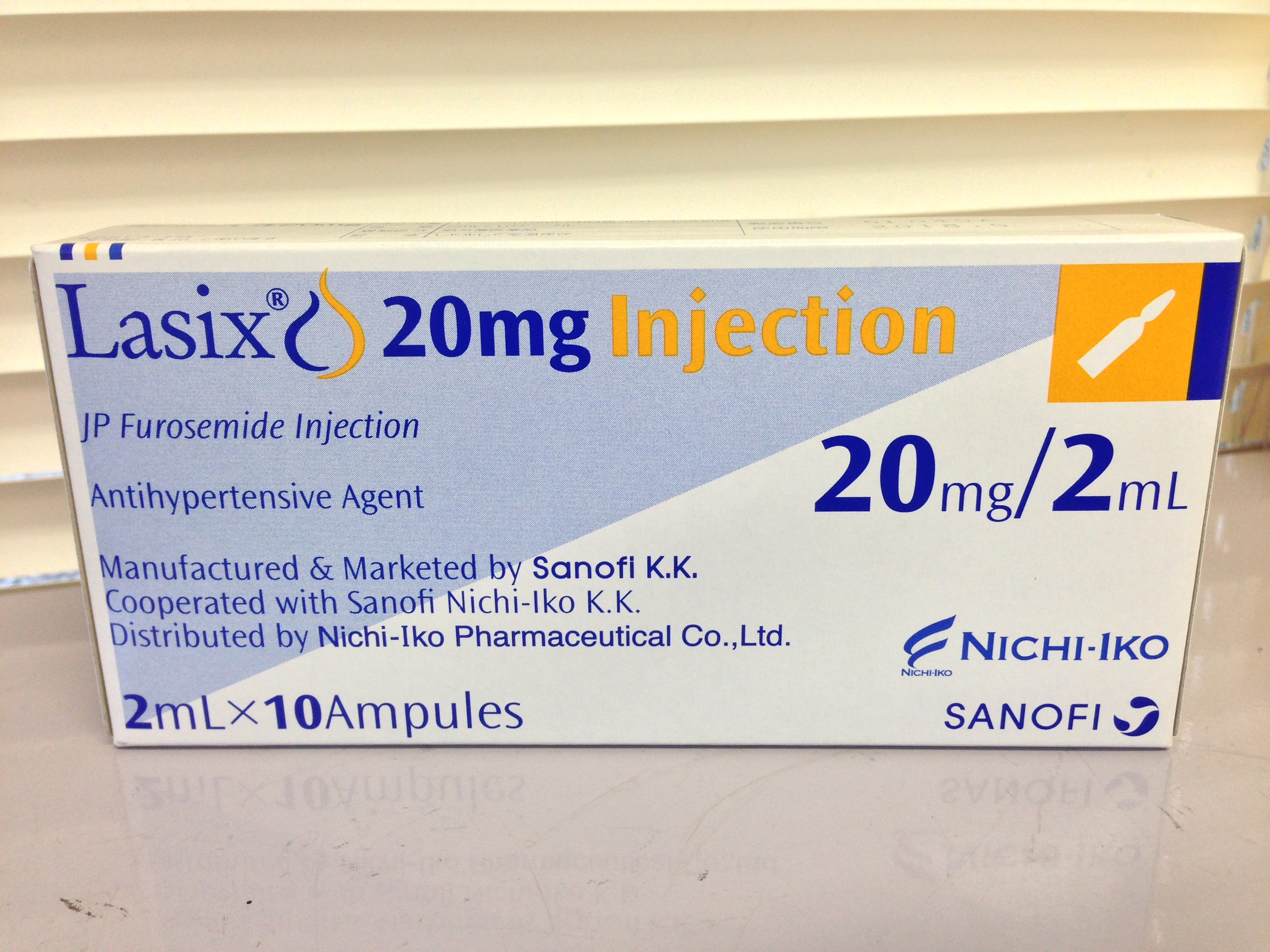|
Diuretic
A diuretic () is any substance that promotes diuresis, the increased production of urine. This includes forced diuresis. A diuretic tablet is sometimes colloquially called a water tablet. There are several categories of diuretics. All diuretics increase the excretion of water from the body, through the kidneys. There exist several classes of diuretic, and each works in a distinct way. Alternatively, an antidiuretic, such as vasopressin ( antidiuretic hormone), is an agent or drug which reduces the excretion of water in urine. Medical uses In medicine, diuretics are used to treat heart failure, liver cirrhosis, hypertension, influenza, water poisoning, and certain kidney diseases. Some diuretics, such as acetazolamide, help to make the urine more alkaline, and are helpful in increasing excretion of substances such as aspirin in cases of overdose or poisoning. Diuretics are sometimes abused by people with an eating disorder, especially people with bulimia nervosa, with the ... [...More Info...] [...Related Items...] OR: [Wikipedia] [Google] [Baidu] |
Loop Diuretic
Loop diuretics are pharmacological agents that primarily inhibit the Na-K-Cl cotransporter located on the luminal membrane of cells along the thick ascending limb of the loop of Henle. They are often used for the treatment of hypertension and edema secondary to congestive heart failure, liver cirrhosis, or chronic kidney disease. While thiazide diuretics are more effective in patients with normal kidney function, loop diuretics are more effective in patients with impaired kidney function. Mechanism of action Loop diuretics are 90% bonded to proteins and are secreted into the proximal convoluted tubule through organic anion transporter 1 (OAT-1), OAT-2, and ABCC4. Loop diuretics act on the Na+-K+-2Cl− symporter (NKCC2) in the thick ascending limb of the loop of Henle to inhibit sodium, chloride and potassium reabsorption. This is achieved by competing for the Cl− binding site. Loop diuretics also inhibit NKCC2 at macula densa, reducing sodium transported into macula ... [...More Info...] [...Related Items...] OR: [Wikipedia] [Google] [Baidu] |
Thiazide
Thiazide () refers to both a class of sulfur-containing organic molecules and a class of diuretics based on the chemical structure of benzothiadiazine. The thiazide drug class was discovered and developed at Merck and Co. in the 1950s. The first approved drug of this class, chlorothiazide, was marketed under the trade name Diuril beginning in 1958. In most countries, thiazides are the least expensive antihypertensive drugs available. Thiazide organic molecules are bi-cyclic structures that contain adjacent sulfur and nitrogen atoms on one ring. Confusion sometimes occurs because thiazide-like diuretics such as indapamide are referred to as thiazides despite not having the thiazide chemical structure. When used this way, "thiazide" refers to a drug which acts at the thiazide receptor. The thiazide receptor is a Sodium-chloride symporter, sodium-chloride transporter that pulls Sodium chloride, NaCl from the Lumen (anatomy), lumen in the distal convoluted tubule. Thiazide diuretics ... [...More Info...] [...Related Items...] OR: [Wikipedia] [Google] [Baidu] |
Antihypertensive
Antihypertensives are a class of drugs that are used to treat hypertension (high blood pressure). Antihypertensive therapy seeks to prevent the complications of high blood pressure, such as stroke, heart failure, kidney failure and myocardial infarction. Evidence suggests that a reduction of blood pressure by 5 mmHg can decrease the risk of stroke by 34% and of ischaemic heart disease by 21%. It can reduce the likelihood of dementia, heart failure, and mortality from cardiovascular disease. There are many classes of antihypertensives, which lower blood pressure by different means. Among the most important and most widely used medications are thiazide diuretics, calcium channel blockers, angiotensin-converting enzyme inhibitors (ACE inhibitors), angiotensin II receptor blockers or antagonists (ARBs), and beta blockers. Which type of medication to use initially for hypertension has been the subject of several large studies and resulting national guidelines. The fundamental ... [...More Info...] [...Related Items...] OR: [Wikipedia] [Google] [Baidu] |
Heart Failure
Heart failure (HF), also known as congestive heart failure (CHF), is a syndrome caused by an impairment in the heart's ability to Cardiac cycle, fill with and pump blood. Although symptoms vary based on which side of the heart is affected, HF typically presents with shortness of breath, Fatigue (medical), excessive fatigue, and bilateral peripheral edema, leg swelling. The severity of the heart failure is mainly decided based on ejection fraction and also measured by the severity of symptoms. Other conditions that have symptoms similar to heart failure include obesity, kidney failure, liver disease, anemia, and thyroid disease. Common causes of heart failure include coronary artery disease, heart attack, hypertension, high blood pressure, atrial fibrillation, valvular heart disease, alcohol use disorder, excessive alcohol consumption, infection, and cardiomyopathy. These cause heart failure by altering the structure or the function of the heart or in some cases both. There are ... [...More Info...] [...Related Items...] OR: [Wikipedia] [Google] [Baidu] |
Furosemide
Furosemide, sold under the brand name Lasix among others, is a loop diuretic medication used to treat edema due to heart failure, liver scarring, or kidney disease. Furosemide may also be used for the treatment of high blood pressure. It can be taken intravenously or orally. When given intravenously, furosemide typically takes effect within five minutes; when taken orally, it typically metabolizes within an hour. Common side effects include orthostatic hypotension (decrease in blood pressure while standing, and associated lightheadedness), tinnitus (ringing in the ears), and photosensitivity (sensitivity to light). Potentially serious side effects include electrolyte abnormalities, low blood pressure, and hearing loss. It is recommended that serum electrolytes (especially potassium), serum , creatinine, BUN levels, and liver and kidney functioning be monitored in patients taking furosemide. It is also recommended to be alert for the occurrence of any potential blood d ... [...More Info...] [...Related Items...] OR: [Wikipedia] [Google] [Baidu] |
Forced Diuresis
Diuresis () is the excretion of urine, especially when excessive (polyuria). The term collectively denotes the physiologic processes underpinning increased urine production by the kidneys during maintenance of fluid balance. In healthy people, the drinking of extra water produces mild diuresis to maintain the body water balance. Many people with health issues, such as heart failure and kidney failure, need diuretic medications to help their kidneys deal with the fluid overload of edema. These drugs promote water loss via urine production. The concentrations of electrolytes in the blood are closely linked to fluid balance, so any action or problem involving fluid intake or output (such as polydipsia, polyuria, diarrhea, heat exhaustion, starting or changing doses of diuretics, and others) can require management of electrolytes, whether through self-care in mild cases or with help from health professionals in moderate or severe cases. Osmotic diuresis Osmotic diuresis is the ... [...More Info...] [...Related Items...] OR: [Wikipedia] [Google] [Baidu] |
Liver Cirrhosis
Cirrhosis, also known as liver cirrhosis or hepatic cirrhosis, chronic liver failure or chronic hepatic failure and end-stage liver disease, is a chronic condition of the liver in which the normal functioning tissue, or parenchyma, is replaced with scar tissue ( fibrosis) and regenerative nodules as a result of chronic liver disease. Damage to the liver leads to repair of liver tissue and subsequent formation of scar tissue. Over time, scar tissue and nodules of regenerating hepatocytes can replace the parenchyma, causing increased resistance to blood flow in the liver's capillaries—the hepatic sinusoids—and consequently portal hypertension, as well as impairment in other aspects of liver function. The disease typically develops slowly over months or years. Stages include compensated cirrhosis and decompensated cirrhosis. Early symptoms may include tiredness, weakness, loss of appetite, unexplained weight loss, nausea and vomiting, and discomfort in the right upper ... [...More Info...] [...Related Items...] OR: [Wikipedia] [Google] [Baidu] |
Indapamide
Indapamide is a thiazide-like diuretic drug used in the treatment of hypertension, as well as decompensated heart failure. Combination preparations with perindopril (an ACE inhibitor antihypertensive) are available. The thiazide-like diuretics (indapamide and chlorthalidone) reduce risk of major cardiovascular events and heart failure in hypertensive patients compared with hydrochlorothiazide with a comparable incidence of adverse events. Both thiazide diuretics and thiazide-like diuretics are effective in reducing risk of stroke. Both drug classes appear to have comparable rates of adverse effects as other antihypertensives such as angiotensin II receptor blockers and dihydropyridine calcium channel blockers and lesser prevalence of side-effects when compared to ACE-inhibitors and non-dihydropyridine calcium channel blockers. It was patented in 1968 and approved for medical use in 1977. It is on the World Health Organization's List of Essential Medicines. Medical uses It ... [...More Info...] [...Related Items...] OR: [Wikipedia] [Google] [Baidu] |
Acetazolamide
Acetazolamide, sold under the trade name Diamox among others, is a medication used to treat glaucoma, epilepsy, acute mountain sickness, periodic paralysis, idiopathic intracranial hypertension (raised brain pressure of unclear cause), heart failure and to alkalinize urine. It may be used long term for the treatment of open angle glaucoma and short term for acute angle closure glaucoma until surgery can be carried out. It is taken Oral administration, by mouth or intravenous, injection into a vein. Acetazolamide is a first generation carbonic anhydrase inhibitor and it decreases the ocular fluid and osmolality in the eye to decrease intraocular pressure. Common side effects include numbness, tinnitus, ringing in the ears, loss of appetite, vomiting, and sleepiness. It is not recommended in those with significant kidney problems, liver problems, or who are sulfonamide allergy, allergic to sulfonamides. Acetazolamide is in the diuretic and carbonic anhydrase inhibitor families o ... [...More Info...] [...Related Items...] OR: [Wikipedia] [Google] [Baidu] |
Water Poisoning
Water intoxication, also known as water poisoning, hyperhydration, overhydration, or water toxemia, is a potentially fatal disturbance in brain functions that can result when the normal balance of electrolytes in the body is pushed outside safe limits by excessive water intake. Under normal circumstances, accidentally consuming too much water is exceptionally rare. Most deaths related to water intoxication in healthy individuals have resulted either from water-drinking contests, in which individuals attempt to consume large amounts of water, or from long bouts of exercise during which excessive amounts of fluid were consumed. In addition, water cure, a method of torture in which the victim is forced to consume excessive amounts of water, can cause water intoxication. Water, like any other substance, can be considered a poison when over-consumed in a brief period. Water intoxication mostly occurs when water is being consumed in a high quantity provoking disturbances in electrol ... [...More Info...] [...Related Items...] OR: [Wikipedia] [Google] [Baidu] |






